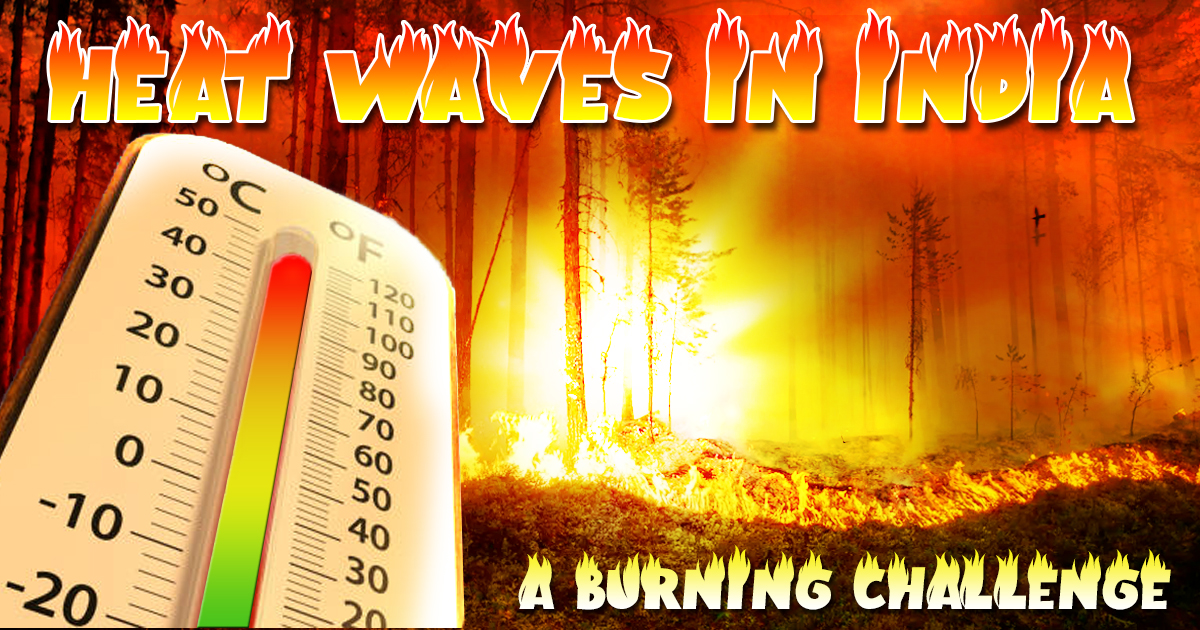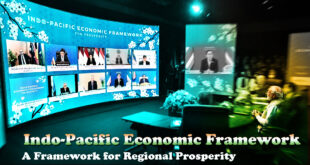
Concept
Heatwaves, periods of abnormally high temperatures exceeding seasonal norms, are a growing concern in India. These scorching events pose a significant threat to public health, agriculture, and overall economic well-being.
The Scorching Reality: Frequency and Intensity on the Rise
India experiences heatwaves primarily between March and June, with the north-western and south-central regions most susceptible. The India Meteorological Department (IMD) defines heatwaves based on location and temperature deviations:
Plains: Heatwave (40°C or more), Severe Heatwave (departure from normal temperature exceeds 6.4°C)
Coastal Stations: Heatwave (37°C or more)
Hilly Regions: Heatwave (30°C or more)
Data paints a grim picture. According to the IMD, heatwave occurrences have significantly increased. Between 1981 and 1990, India witnessed 413 heatwave days. This number jumped to 600 days between 2011 and 2020.
The human cost is equally alarming. Heat-related deaths have risen from 5,457 (1981-1990) to 11,555 (2011-2020), with a total exceeding 39,815 since 1967.
Climate change is the primary culprit behind this intensification. Global warming alters atmospheric circulation patterns, leading to prolonged periods of high pressure and stagnant air masses. Reduced rainfall further exacerbates the situation, creating a vicious cycle of heat and dryness.
The Devastating Impact: A Multifaceted Crisis
Heatwaves have a cascading effect on various sectors:
Public Health: Heat stress, dehydration, and heatstroke are the most immediate dangers. Elderly individuals, children, outdoor workers, and those with pre-existing health conditions are particularly vulnerable. Increased air pollution due to stagnant air can worsen respiratory problems.
Agriculture: Crops wilt and yields decline due to extreme heat and water scarcity. This impacts food security and livelihoods of millions of farmers.
Water Resources: Heat intensifies evaporation, leading to depletion of water resources in rivers, lakes, and reservoirs. This can disrupt water supply for drinking, irrigation, and hydropower generation.
Energy Demand: Soaring temperatures push up energy demand for air conditioning, putting a strain on the power grid. Power outages during heatwaves further exacerbate the problems.
Infrastructure: Heat can damage roads, railway tracks, and power lines, leading to disruptions in transportation and communication.
Responding to the Heat: Preventive Measures and Mitigation Strategies
Combating heatwaves requires a multi-pronged approach at individual, community, and national levels:
Individual Level:
Stay Hydrated: Consume plenty of water and cooling beverages (but limit sugary drinks) throughout the day.
Dress Cool: Wear loose, light-colored, and cotton clothing to maximize sweat evaporation and keep the body cool.
Limit Activity: Avoid strenuous activity during peak heat hours (typically 12 noon to 3 pm).
Seek Cool Relief: Stay indoors in air-conditioned spaces or take cool showers or baths whenever possible.
Community Level:
Public Awareness: Disseminate information about heatwave risks and preventive measures through various channels (media, community outreach programs).
Cooling Centers: Establish cooling centers in public spaces like schools, libraries, and community centers where people can find respite from the heat.
Improved Water Access: Ensure access to clean drinking water in vulnerable areas, especially during heatwaves.
Urban Planning: Promote green infrastructure like trees and parks to provide shade and improve air quality.
National Level:
Heat Action Plans (HAPs): These crucial plans developed by the National Disaster Management Authority (NDMA) aim to mitigate heatwave impacts. Key elements include:
Early Warning Systems: Utilize weather forecasting and data analysis to predict heatwaves and issue timely warnings.
Vulnerability Mapping: Identify high-risk populations (elderly, outdoor workers, people living in slums) who may require targeted interventions.
Public Outreach and Awareness Campaigns: Educate the public about the dangers of heatwaves and preventive measures.
Inter-departmental Coordination: Ensure effective response from health departments, emergency services, power grids, and water supply authorities.
 Chinmaya IAS Academy – Current Affairs Chinmaya IAS Academy – Current Affairs
Chinmaya IAS Academy – Current Affairs Chinmaya IAS Academy – Current Affairs
